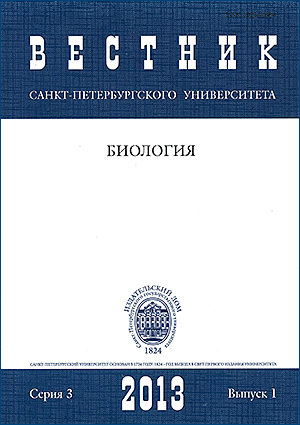Primary succession of vegetation and soils in quarries within northern taiga subzone (on the territory of the Ukhtinskiy and Sosnogorskiy districts of Komi Republic)
Abstract
The article examines process of plant recovery and soils restoration in clay and lime quarries on the territory of Komi republic. Recovery time averages from 1–2 to 12–20 years. As opposed to southern taiga subzone (Leningrad region) northern taiga is characterized by weaker interrelation between plant communities, theirs species composition and type of substratum. Similar plant communities are formed on both types of quarries, clay and limestone. Vegetation demonstrates common dynamic primary succession series from open ruderal plant groups to gramineous and motley grass plant communities. Primary succession is characterized by slow soil development. The principle soil process is accumulation of organic matters, but ecogenic soil transformation is characterized by the very initial stage. Only in some cases the most developed stages of succession soils are classified as humus embriosoils or sod humus accumulative soils.
Keywords:
soil restoration, natural revegitation of spoilbanks, soil organic profiles, north taiga, reclamation in extreme condition
Downloads
Downloads
Published
How to Cite
Issue
Section
License
Articles of Biological Communications are open access distributed under the terms of the License Agreement with Saint Petersburg State University, which permits to the authors unrestricted distribution and self-archiving free of charge.





